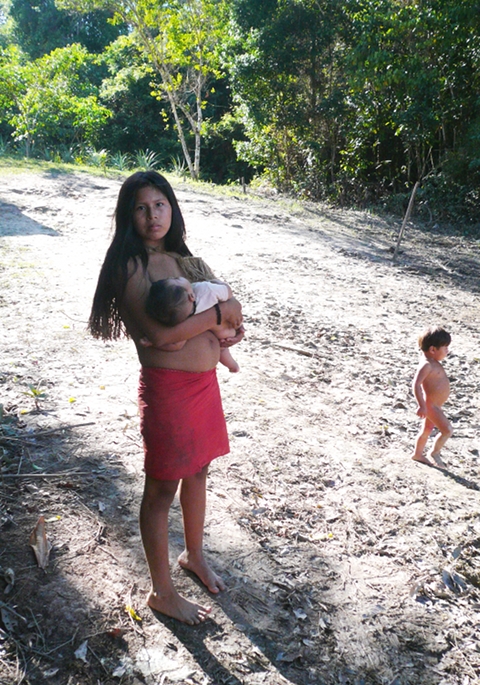Deforestation/Introduction/Teacher Notes
| Module One Objectives
|
Contents
Time Allocation
This module is estimated to take between 1 and 1.25 hours of learner time.
Introductory Activity
Ensure that the students have access to this photo. Use it as a launching point for stimulating conversation and guided discussion. The following "I wonder ..." questions may serve to aid in focusing the class or group discussion:
- I wonder where this family lives?
- I wonder why they are standing in the mud?
- I wonder what the young woman is thinking?
The educator may require the students to record all (or a number) their "I wonder ..." statements, and add them to a wall-display alongside the photo. As the unit unfolds, more images and "I wonder ..." statements could be added. This is an excellent way for learners to take ownership of their learning space. By the end of the unit, all the learners should have made at least one "I wonder ..." contribution to each of the "Wonderings" activities presented throughout the unit.
Teaching Objectives
|
Additional Definitions for the Educator's Use
Deforestation is the permanent destruction of indigenous forests and woodlands. The term does not include the removal of industrial forests such as plantations of gums or pines. Deforestation has resulted in the reduction of indigenous forests to four-fifths of their pre-agricultural area. Indigenous forests now cover 21% of the earth's land surface. [1]
Deforestation is the clearance of naturally occurring forests by the processes of logging and/or burning of trees in a forested area. There are several reasons deforestation occurs: trees or derived charcoal can be sold as a commodity and used by humans, while cleared land is used as pasture, plantations of commodities and human settlement. The removal of trees without sufficient reforestation has resulted in damage to habitat, biodiversity loss and aridity. Deforested regions typically incur significant adverse soil erosion and frequently degrade into wasteland. [2]
Disregard or ignorance of intrinsic value, lack of ascribed value, lax forest management and deficient environmental laws are some of the factors that allow deforestation to occur on a large scale. In many countries, deforestation is an ongoing issue that is causing extinction, changes to climatic conditions, desertification, and displacement of indigenous people. [3]
Activity One: Word Bank/Glossary
Teaching Objectives
|
Facilitate or supervise the creation of a Word Bank/Glossary of terms related to deforestation, e.g. aridity, biodiversity and erosion, etc.
Activity Two: Defining Deforestation
Teaching Objectives
|
Activity Three: Writing a Hypothesis
Teaching Objective
|
It is suggested that the learners consider the question in pairs. After a brief discussion, the pairs exchange partners with another team to discuss their thoughts. Ensure that all the learners have written down their hypothesis to the question.
Ongoing Assessment
Assessment One: KWL Activity
Teaching Objectives
|
For this activity, the learners need to brainstorm ideas about everything they know about deforestation. These results must be recorded in the left-hand column of the KWL table. Instruct the learners to write what they want to know in the middle column. After this, compile a class list of questions to be covered during the unit - it is up to the educator to decide which questions are suitable and which are not. The learners are to record their learning in the right-hand column.
Module Summary
Teaching Objectives
|
Suggested Procedure
- The students are to either collect photos, or pictures from old magazines, brochures (or something similar), or create drawings depicting what they have learned in this module.
- At the conclusion of this module, the learners are to paste these drawings, photos or pictures onto a big poster, where possible linking them to the terms and definitions that they have accumulated in their wordbank.
- The students are further required to annotate these photos, pictures or drawings with applicable knowledge they have gained on the topic of deforestation.
Photo Gallery
A number of photographs are provided in the
Photo Gallery as additional resources for the Module Summary. Alternatively these can be used at the educator's discretion at any other point in the Module.
